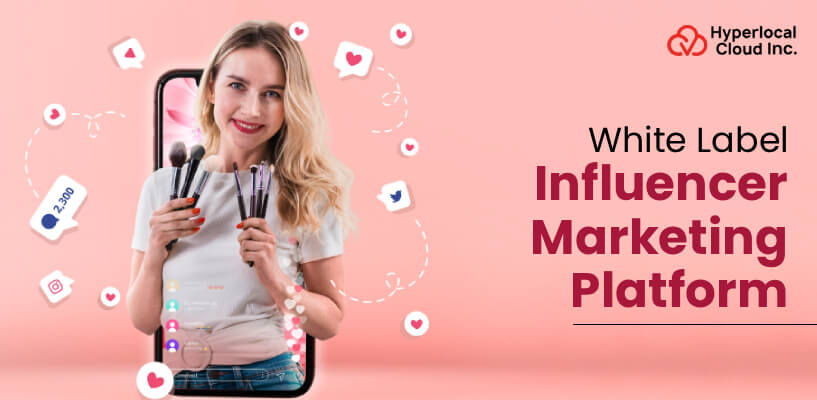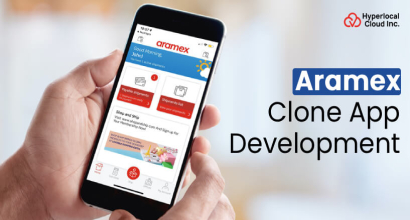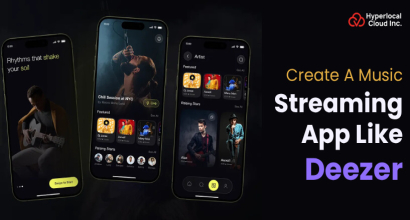In today's digital age, Influencer marketing has become a game for companies that want traction with their target groups. The way brands communicate with consumers has gone through a dramatic change, with marketing ahead of this change. By taking advantage of the access and reliability of social media, brands can be authentic in marketing their products or services. As this form of marketing increases, influencer marketing platforms effectively appear as streamlined and powerful control tools.
In recent years, the influencer marketing industry has seen rapid growth, and business support is moving towards these platforms. However, a new and innovative model, the white label influencer marketing platform, has begun to take center stage. This model allows companies to redirect the platforms as their own and offers flexibility, scalability, and adaptation.
In this blog, you will learn about the concept of white label influencer marketing platforms, the benefits, essential functions, their technology stack, and the development process with monetization strategies.
What is an Influencer Marketing Platform?
An influencer marketing software is a digital platform that enables businesses to connect with social media influencers in order to manage their campaigns, track performance, and optimize engagement. These platforms are designed to automate and simplify the process of identifying, working conditions, marketing campaigns, and analyzing results. The primary goal of this platform is to help businesses increase their brand, increase traffic, and promote sales.
Launch Your Own Influencer Platform Now
How is the White Label Influencer Marketing Platform Beneficial for Businesses?
Businesses will get numerous benefits from the white label influencer marketing platforms. Some of the most essential ones are precisely discussed below. Have a look:
1. Brand Customization
Since the platform is built, businesses can tailor designs, components, and the entire user experience to match their brand. This means that you can provide a well-customized platform for your customers while maintaining a connection with your existing brand.
2. Cost-Efficiency
The development of an influencer marketing platform from scratch can be expensive and time-consuming. A white label solution eliminates the need for growth from the ground up, saving significant development cost as well as time.
3. Time-Saving
With a white label platform, companies can skip the feature development and test phase. You receive an existing platform that can be up and running fast, so you can offer services to customers immediately.
4. Scalability
The white label influencer marketing platform is designed to grow existing businesses through social media. As your business grows, platforms can accommodate users and affect an increasing number of affected campaigns, which provide a permanent solution for long periods.
5. Access to Advanced Features
Most white label platforms are equipped with the latest techniques, such as AI-operated analysis, advanced search algorithms, and campaign management systems. This gives the business access to powerful resources without the need for special technical expertise.
The Core Features of an Influencer Marketing Platform
An influencer marketing platform comes with a wide range of core features that facilitate influencers, paid promotion businesses, and admins. Let's take a look at the features to understand the platform's functionalities.
1. Advanced Search Filters
These enable businesses to reduce discovery based on a larger matrix, such as niche, location, audience size, engagement frequency, social media platforms, and more. For example, a brand looking for beauty-influential people can find relevant candidates in seconds.
2. Influencer Profiles
Each influential person usually has a profile page with their followers' demographics, engagement figures, material history, and previous brand cooperation. This makes it easy to assess the suitability of an effective approach for a specific campaign.
3. Social Media Integration
A platform should enable businesses to integrate with various social media networks, including Instagram, YouTube, and Twitter, which provides a convenient way to access impressive data across multiple platforms.
4. Campaign Creation Tools
Businesses can create campaigns with city-defining goals, deadlines, a budget, and objectives. Campaign goals can range from increasing brand awareness to selling products, and software should allow users to choose specific key performance indicators to track their companies.
5. Timeline and Milestone Tracking
The dashboard should have a time-term facility that allows businesses to imagine the campaign's progress. It helps track milestones such as the material approval, posting schedule, and display benchmarks.
6. Collaboration Tools
The platform should enable simple communication between brands and influencers. Report boards, information, and approval procedures streamline interactions with back-end completion that occur during the execution of the expedition.
7. Content Approval Process
This feature allows businesses to review and approve the impressive material, match the brand's guidelines, before it is posted. This is especially important for companies that maintain a smooth tone and message in all their campaigns.
8. Content Scheduling
Once the material is approved, companies can plan to be published on specific dates. Helps adapt the time of the planning post when the target groups are the most active, making the engagement maximum.
9. Content Repository
A CMS should store all approved materials in a format that is easily accessible and searchable. This allows companies to undergo the previously impressive material, reproduce it, or use it for future campaigns.
10. Real-Time Analytics
Monitoring real-time data allows companies to adjust their campaigns quickly if things do not run according to plan. The essential metrics, such as impressions, click-through rates (CTR), and engagement rates, help assess the immediate effect of a campaign.
11. Post-Campaign Reporting
When a campaign is over, companies should receive a comprehensive report that provides details about the progress of the campaign. The report should include access rates, conversion rates, return rates, influencer commitments, and other relevant metrics. This helps brands understand the return on investment (ROI) and refine their influencer marketing strategy.
12. Data Visualization
Influencer marketing platforms should include visual representations of data, such as diagrams, graphs, and heat maps, which make it easier to explain the performance of their campaigns to companies.
13. Audience Insights
AI technologies can provide intensive insight into an influencer's audience, including age, gender, location, and behavioral patterns. This helps companies to ensure that the public in the influencer case corresponds to their demographic goals.
14. Automated Influencer Suggestions
Instead of searching manually, AI equipment may automatically recommend influential people based on expedition parameters. This saves time and improves the opportunity to find an impressive match.
15. Influencer Communication Logs
An IRM (Integrated Risk Management) system maintains a comprehensive log of all communication between the brand and the influencers. This is particularly helpful for managing long-term partnerships and tracking previous interactions.
16. Collaboration History
The software also maintains a record of all previous collaborations, including details, results, and payment information. This makes it easy to manage recurring influencer relationships and understand which influencers give the best results.
17. Influencer Performance Tracking
By continuously monitoring the influencer performance, brands can identify top execution of affected areas and focus more resources on nourishing these conditions.
18. Secure Payment Gateway
In order to ensure the safety of financial transactions, the platform must be integrated with a reliable payment portal, such as PayPal, Stripe, or a Traditional Banking System. Safe transactions help create confidence between businesses and influencers.
Integration of AI-driven Technologies in Influencer Marketing Platform
As technology develops, the blending of productive AI has become increasingly trendy. AI-powered technologies can help businesses evolve campaigns and alter the results. Below are some ways AI differs in influencer marketing platforms:
1. Influencer Matching Algorithms
AI can increase influencer discovery by analyzing large datasets and predicting what effects will be the best struggle for a specific brand. The AI-operated algorithms analyze factors such as the public's demographics, content engagement, and influencer reliability to recommend the most effective effects.
2. Sentiment Analysis
AI can analyze the sentiments of posts in social media and comments to measure the feelings of consumers about a brand. By using emotional analysis tools or technologies, companies can determine whether their impressive expeditions resonate with their target groups and identify necessary adjustments.
3. Predictive Analytics
The feature of AI-driven predictive analytics can predict future tendencies and performance results based on historical data. This allows businesses to optimize their tactics and target their campaigns more promptly.
4. Content Optimization
AI can help companies adapt to influencer analyzing by the pattern of engagement and identifying the types of content that receive the most attention. AI can suggest changes in material formats, messages, and post time to increase performance.
Create Your Brand’s Custom Influencer Marketplace!
Step-by-Step Guide to Developing an Influencer Marketing Platform
There are so many steps that are included in the development phase. Experienced on-demand app development companies typically follow these steps to offer a robust platform to startups or entrepreneurs. The essential steps are mentioned below, just have a look:
1. Market Research
Before giving a push toward a development phase, it is essential for businesses to make a blueprint of their ideas. You should go through the current market trends of the business idea that you want to pursue. Analyze your target audience and competitors to give an impactful approach to your idea.
2. Define Core Features
Once you're done with the research part, it's time to focus on the core features. Look, if you're going with scratch, then you have to integrate core as well as advanced features in the platform. However, with white label solutions, you already receive the core features; all you need to do is customize them according to your brand's specific needs.
3. UI/UX Design
The next step is to create a simple and clean UI/UX design that engages users and builds interest in the platform. Make sure to approach an experienced mobile app development company that uses the right wireframes and prototypes to make the platform user-friendly and mobile-friendly.
4. Development
The development part is the primary goal, which you should achieve with a wise selection. Now, during the development phase, you will have two options from which to choose, selecting the one that better suits your business needs. The first one is custom app development, which means the developer develops the influencer marketing platform from scratch, with extra time, effort, and money. The other one offers a white label solution for development, which will be less expensive and require fewer efforts. Both phases have their own pros and cons; all you need to do is decide wisely.
5. Testing & QA
Once everything is done, it is the time when highly expert tech developers test the influencer marketing platform automatically and manually. This process is essential in order to remove and resolve bugs, errors, and glitches from the platform.
6. Launch
The launching process takes place with the two particular operating systems, one of which is Android, and the other is iOS. You can launch your influencer marketing application on the Google Play Store and the Apple App Store. This will be helpful for you to target a wide range of audiences.
Explore the Tech Stack Used to Build an Influencer Marketing Platform
Building a robust influencer marketing platform requires utilizing a diverse tech stack. Here's a breakdown of some common technologies used to develop an influencer marketing platform:
| Category | Tech Stack |
| Frontend | React, Angular, Vue.js |
| Backend | Node.js, Ruby on Rails, Django |
| Database | PostgreSQL, MySQL, MongoDB |
| Cloud Services | AWS, Google Cloud, Microsoft Azure |
| AI Tools | TensorFlow, Keras, IBM Watson |
| Payment Gateway | PayPal, Stripe, Payoneer, and Tipalti |
Monetizing Strategies for the Influencer Marketing Platform
Once you've developed and launched your influencer marketing platform, it's time to think about how to monetize it. Here are some strategies businesses use to generate revenue from influencer marketing platforms:
1. Subscription-Based Model
Admins are required to charge the monthly or annual membership fee for companies to use the platform with extensive benefits. You can also offer different levels of features at various levels to other subscribers, such as basic effects or advanced analysis tools. This model provides an estimated revenue flow and is very scalable.
2. Transaction Fees
You may require a transaction fee on each campaign on your platform. This fee may be a percentage of the total promotional budget or a transaction fee. This model adjusts your revenue based on the success of the campaign on stage.
3. Freemium Model
Provide free access to the platform and the cost of premium features. For example, the business can use the platform to search and manage small promotions for free; However, advanced analyzes, in-depth effect reports, and further promotional management facilities can be installed at a price.
4. Pay-Per-Influencer
A brand partner with an influencer presence on the platform, charging every time. This model works well for platforms that focus on connecting the affected and marks directly, and may include tiered prices based on engagement frequency.
5. Affiliate Programs
Set associated affiliate programs where businesses pay for leads or conversions generated through influencer campaigns on your platform. This model encourages platforms to create a potentially new revenue flow.
6. Advertisement and Partnerships
Take advantage of partnerships with companies that want to advertise on your platform. If brands and effects use your platform, you can sell advertising space to related businesses, such as marketing tools, software companies, or educational platforms.
Boost Your Business with a White Label Platform!
How Much Does It Cost to Build an Influencer Marketing Platform?
The average cost to build an influencer marketing platform starts at around $7,000, but this is just a rough estimate. There are several factors that are responsible for the decrease or increase in cost. The main factor is the development phase that you choose, like if you go with the scratch to develop an influencer marketing platform, then it will cost you too much, and it also takes a few months to be deployed. However, if you choose white label solutions for the development of the influencer marketing platform, then it will save both your cost and time.
Other than that, there are many other reasons that are also the main cause of higher development costs. In this, platform choice, team expertise, platform complexity, UI/UX design, and third-party integrations play a vital role.
Why Choose Hyperlocal Cloud?
Hyperlocal Cloud is a leading and reputable software development company with a wide range of satisfied customers. We offer businesses, startups, and entrepreneurs an advanced influencer marketing platform with AI-driven technology integration. Our team of experts offers both custom and white label solutions that successfully help you to streamline your business operations. Here are the reasons that convince you why we're the best choice.
1. Scalable Infrastructure
We offer a flexible and scalable infrastructure that allows companies to expand their influencer marketing solutions without concern for performance problems. The platform can handle a large number of users, including those affected and those promoting, together.
2. AI-Driven Insights
Powered by advanced AI technologies, we provide action-rich insights and future analyzes to help companies adapt impressive influencer campaigns. AI-driven technologies can provide recommendations on influencer selection, material adaptation, and targeting of the public.
3. Custom Branding
Hyperlocal Cloud offers full white label options, which means that companies can adapt the platform with their own branding. This is ideal for companies that want to create a simple, brand experience for their customers, without developing scratches.
4. Cost-effective
With the cost-effective model, our team provides competitive prices for companies of all sizes. This will eliminate the need for investments for the advanced features and functionalities, so companies can only pay for the features they need.
5. Excellent Support
We offer dedicated customer help and ensure that businesses receive help in all phases of implementation and use of platforms. Whether it is technical assistance or guidance on the optimization of campaigns, Hyperlocal Cloud offers extensive support options.



